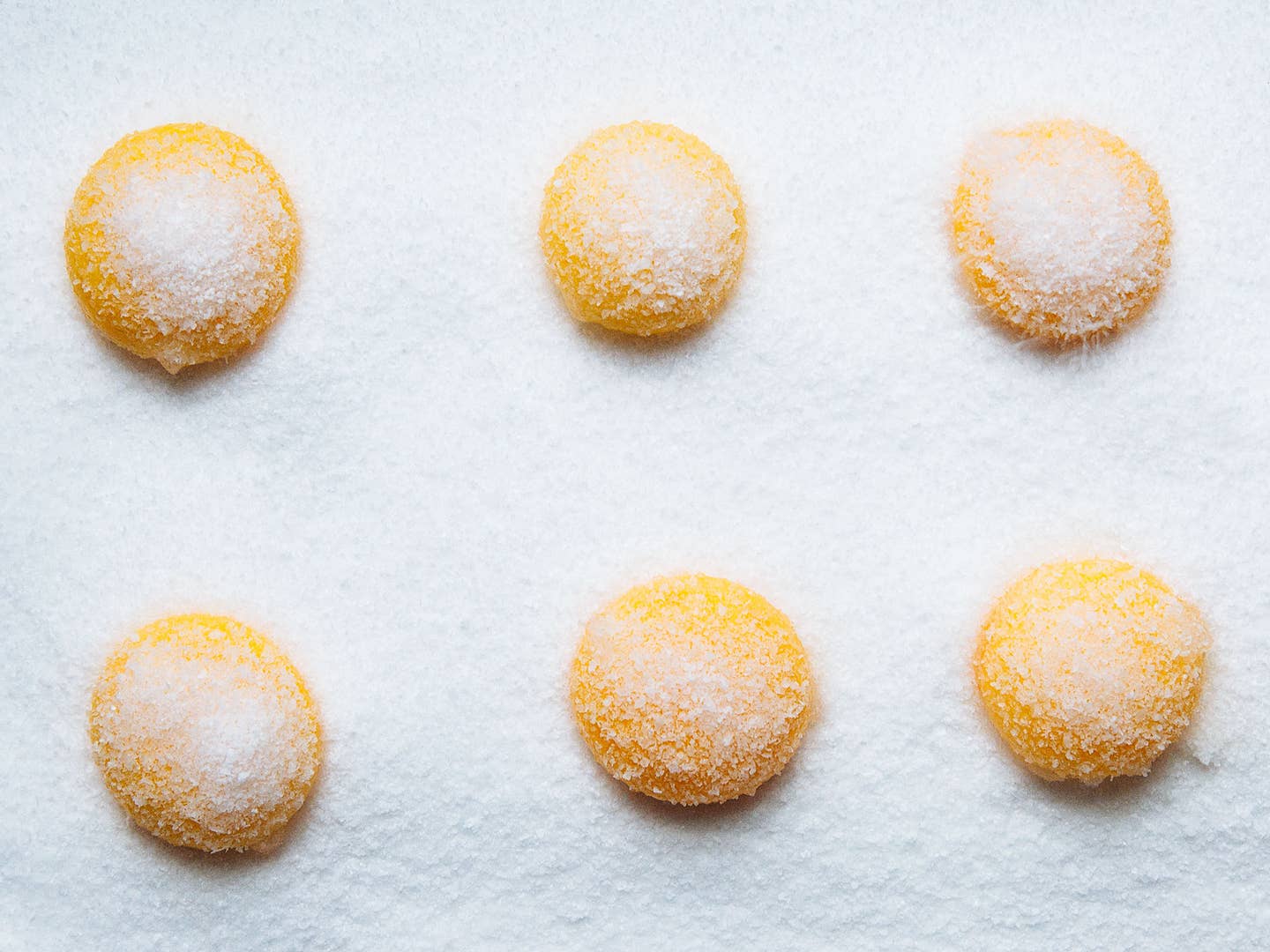
Salted Egg Yolks Are the Best New Thousand-Year-Old Food Trick
This quick-cured object of fine-dining fascination—liquid yolks turned into solid, grateable nuggets of umami like cheese—has a long history
Quick! An alchemical reaction that can transform simple kitchen staples into sophisticated accoutrements is at your fingertips. Bury an egg yolk in a mound of salt and sugar, wait a while, and voila. The wobbly sphere of fat transforms into a golden disc the consistency of parmesan and just as satisfying in its complexity.
American chefs and recipe writers have been fascinated with the neat trick for a little over a year now—Google search interest in salt-cured egg yolks spiked in 2015—with food bloggers, Pinterest obsessives, and glossy magazines hailing the "new" ingredient as "your new favorite pasta garnish" and "better than parm." (Yes, they starred in last year's SAVEUR 100, too.)
Restaurants across the country are incorporating salt-cured eggs into their menus. At Kali in Los Angeles, chef Kevin Meehan grates it over gelato for dessert. At Agern in New York City, chef Gunnar Karl Gíslason slices it thin and tosses it with flowers and tubers in a pretty take on nouveau potato salad.
The momentum is enough to suggest some new zeitgeist has taken hold, but in fact, people have been fawning over salted egg yolks for centuries—just on the other side of the world. If you want to see first hand, try a stroll through your local Chinatown, the cured yolk fiend’s El Dorado; there the roads are paved with salty-sweet-umami gold.
In Cantonese restaurants, crabs are often fried in a velvety layer of salted egg yolk sauce. Go at dim sum and you can grab tender steamed buns filled with molten salted egg yolk custard fresh off the cart. Swing by a Chinese bakery during the Mid-Autumn Festival and suddenly every shop hawks lotus paste mooncakes, each filled with a moon-evoking golden salted yolk.
Salted eggs are so ubiquitous in Chinese cooking that they’re practically mundane. For my parents, Chinese immigrants who settled in the American South, home wasn’t home without a jar of duck eggs preserved the traditional Chinese way, whole and raw in brine. Over the course of weeks, the salt water drew out moisture, concentrating the egg’s rich flavor and rendering the whites creamy and as saline as the brackish water the egg is set in. The yolks hardened into bright orange spheres, the fattiness thick and concentrated, cut through by a whisper of salt. We ate them regularly as a comforting staple with rice porridge.
Chinese cooks aren't the only ones curing eggs. In the Philippines, eggs are traditionally preserved in a salt-rich clay to achieve the same effect. The Japanese have their own traditional take on the cured egg yolk, closer in technique to the one currently celebrated on the internet. In The Book of Miso, a volume written in the 1970's meant to introduce American kitchens to the fermented soy product, yolks are soft boiled, then pressed between sheets of miso paste to make miso tamago tsuke to eat plain or on top of rice.
I reached out to H. Alexander Talbot, one half of the experimental cooking blog Ideas in Food, to see if he could pinpoint where and when Western cooks picked up on the idea. He learned about the salting technique at Incanto in San Francisco, taking it a step further by substituting fish-flavored salt for plain, and later wrote about cured yolks one year ahead of the Great Cured Egg Google Spike of 2015. Around the same time, chef Jeffrey Weiss, who worked in famed modernist-leaning kitchens in Spain, published a recipe for cured yolks in his cookbook Charcuteria, which some cite as the inspiration for the idea.
Talbot attributes the yolk’s spread and success to the modernist cooking movement, which has turned methods like sous vide and spherification nearly mainstream. Cheap, universally beloved, and chemically fascinating egg yolks have long been essential to the modernist toolbox, and the chefs doing the most with the technique often work in restaurants that exemplify a modernist spirit of manipulating food to its limits.
But in Asia, you don't need to visit a high-end modernist restaurant to uncover an extended universe of new cured yolk treats. In Singapore alone, recent inventions have included salted yolk onion rings, french fries, ice cream, and cocktails, just to name a few. Even McDonald's has joined in, launching a fried chicken sandwich with salted egg yolk gravy.
In Hong Kong, one bakery has made a name for itself by making a croissant with a sweet, oozy salted egg custard filling—a venture that seems almost too perfectly poised for dominance in the worlds of Instagram #yolkporn and food-mashups. See, for example, salted egg yolk macarons, rainbow cake, and pizza.
I've been especially intrigued by the way Mandy Lee of the home-cooking blog Lady and Pups has seized on the trendiness of the humble salted egg. She whips cured yolks into a tartar sauce for battered fish, pops them into carbonara for an umami punch, and bakes the little gold wonder into delicate slightly savory tea cookies. Another idea from a friend that doesn't even require a pan: smush it onto avocado toast. And I still find comfort in eating them by a bowl of zhou (rice porridge) on a cold day.
What delights await us when high and low, East and West converge in the kitchen? The cured yolk’s bounds are limited only by the human imagination; it has proved itself to be subtle enough to be slipped into any dish that needs a fatty, eggy boost, no matter the culture or cuisine. And while versatility is a boon, for sure, I like the little salted egg’s metaphorical aspirations best: universal food as universal binder.
Keep Reading
Continue to Next Story










